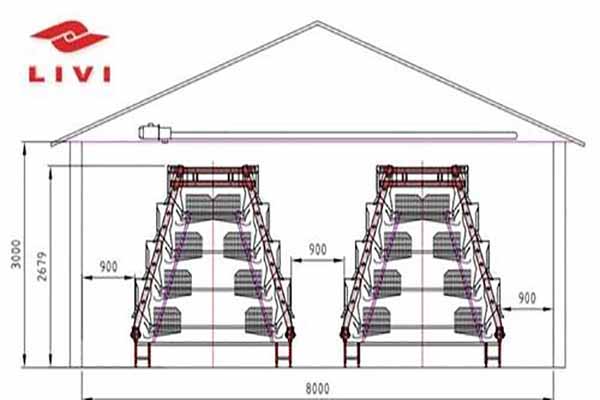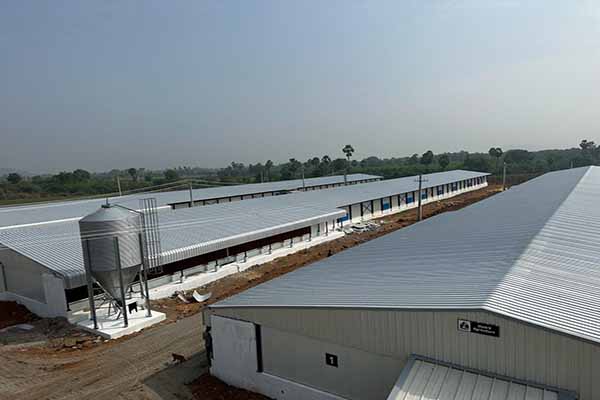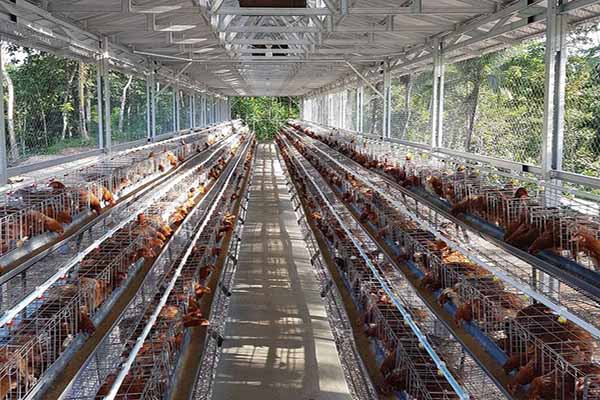Kenya Chicken Farm Automation Equipment: Cost-Effectiveness and Ranking
Time : 2025-06-30
In the dynamic world of poultry farming, Kenya has emerged as a significant player, with a growing demand for automation equipment to enhance efficiency and productivity. The adoption of automated systems in chicken farming has become a crucial factor for success, and this article aims to delve into the cost-effectiveness and ranking of automation equipment in Kenya’s chicken farming industry.
Understanding Chicken Farm Automation Equipment
Automation in chicken farming involves the use of technology to manage various aspects of the farming process, from feeding and watering to monitoring health and managing waste. Equipment such as automatic feeders, waterers, egg collection systems, and environmental controllers play a pivotal role in streamlining operations.
Cost-Effectiveness of Chicken Farm Automation Equipment
The cost-effectiveness of automation equipment is a critical factor for farmers looking to invest in these technologies. Several factors influence the cost-effectiveness of automation equipment, including initial investment costs, operational costs, and potential returns on investment.
Initial Investment Costs
The initial cost of acquiring automation equipment can be a significant barrier for many farmers. However, it is essential to consider the long-term benefits of these systems. High-quality automation equipment can often pay for itself through increased productivity and reduced labor costs.

Operational Costs
Operational costs, such as maintenance, energy consumption, and labor savings, also play a role in the cost-effectiveness of automation equipment. Efficient systems can lead to lower energy consumption and reduced need for manual labor, resulting in substantial savings over time.
Return on Investment
The return on investment (ROI) for automation equipment in chicken farming can be substantial. With increased productivity, improved flock health, and reduced labor costs, farmers can expect a strong ROI from their investment in automation technology.

Ranking of Chicken Farm Automation Equipment in Kenya
The ranking of automation equipment in Kenya’s chicken farming industry can be determined based on various factors, including performance, reliability, cost-effectiveness, and adaptability to local conditions.
Top-Ranked Automation Equipment in Kenya
- Automatic Feeders: Automatic feeders have become a staple in modern chicken farming, providing consistent and precise feeding. They are known for their reliability and adaptability to various flock sizes and feeding requirements.
- Waterers: Automated waterers ensure that chickens have constant access to clean water, which is essential for their health and productivity. They are also easy to maintain and are highly cost-effective.
- Egg Collection Systems: Automated egg collection systems reduce labor costs and minimize the risk of eggs being damaged. They are efficient and can handle large volumes of eggs without any issue.
- Environmental Controllers: Environmental controllers help maintain optimal conditions for chickens, including temperature, humidity, and ventilation. They are crucial for ensuring the health and well-being of the flock and can lead to significant cost savings.
Factors Influencing the Ranking of Automation Equipment
Several factors influence the ranking of automation equipment in Kenya’s chicken farming industry:
Performance
Performance is a crucial factor when selecting automation equipment. High-quality systems should be reliable, efficient, and easy to use. They should also be designed to handle the specific needs of chicken farming operations in Kenya.
Reliability
Reliability is another critical factor. Equipment that requires frequent repairs or maintenance can be costly and disrupt operations. Therefore, farmers should prioritize equipment with a proven track record of reliability.
Cost-Effectiveness
As mentioned earlier, cost-effectiveness is a significant fa ctor when considering automation equipment. Farmers should look for systems that provide the best value for their money.
ctor when considering automation equipment. Farmers should look for systems that provide the best value for their money.
Adaptability
Adaptability to local conditions is also essential. Automation equipment should be designed to work efficiently in Kenya’s diverse climate and farming environments.
Conclusion
In conclusion, the adoption of automation equipment in Kenya’s chicken farming industry has become essential for enhancing efficiency, productivity, and profitability. By considering factors such as cost-effectiveness, performance, and adaptability, farmers can select the best automation equipment to meet their specific needs. With the right technology in place, Kenya’s chicken farming industry can continue to grow and thrive.











